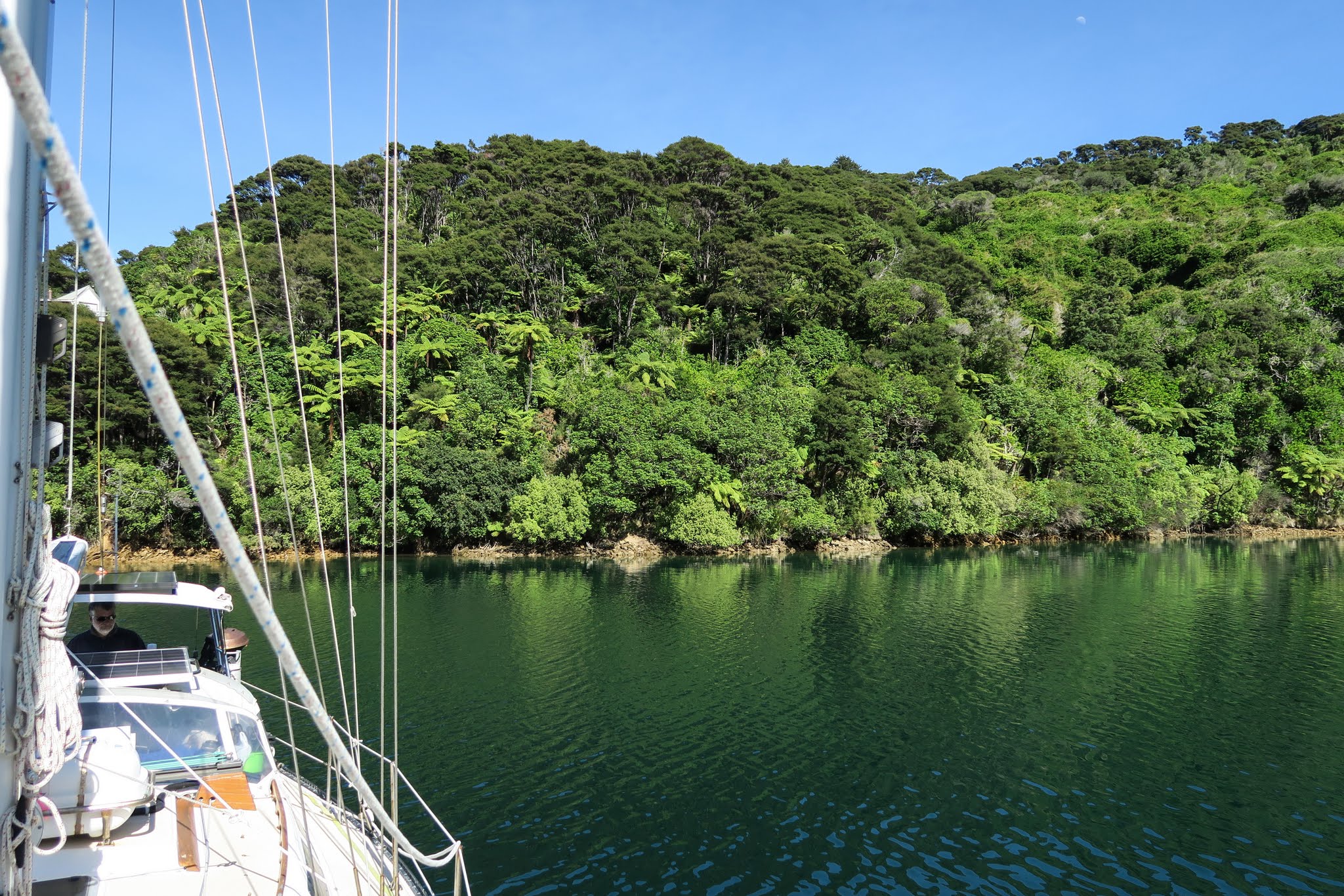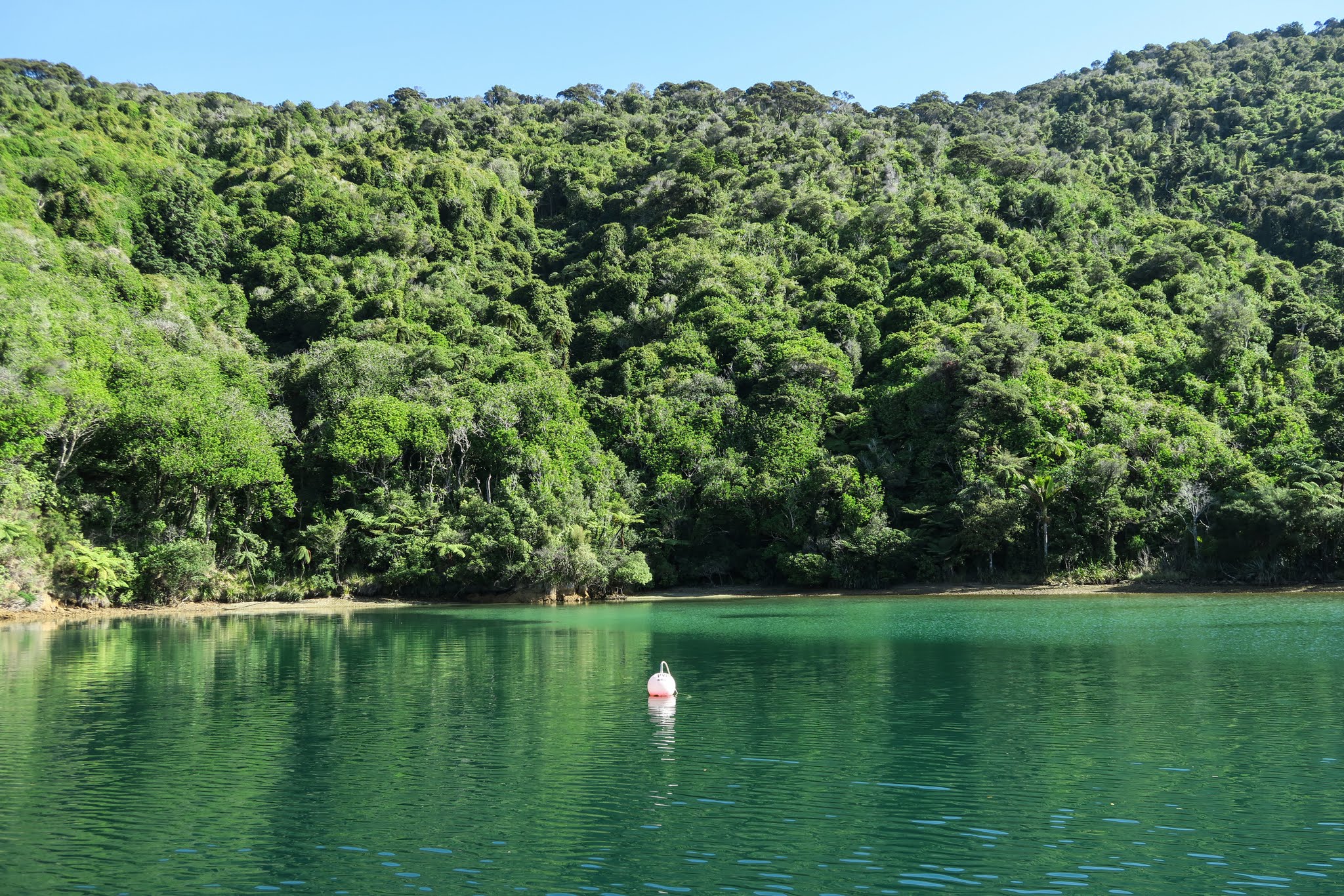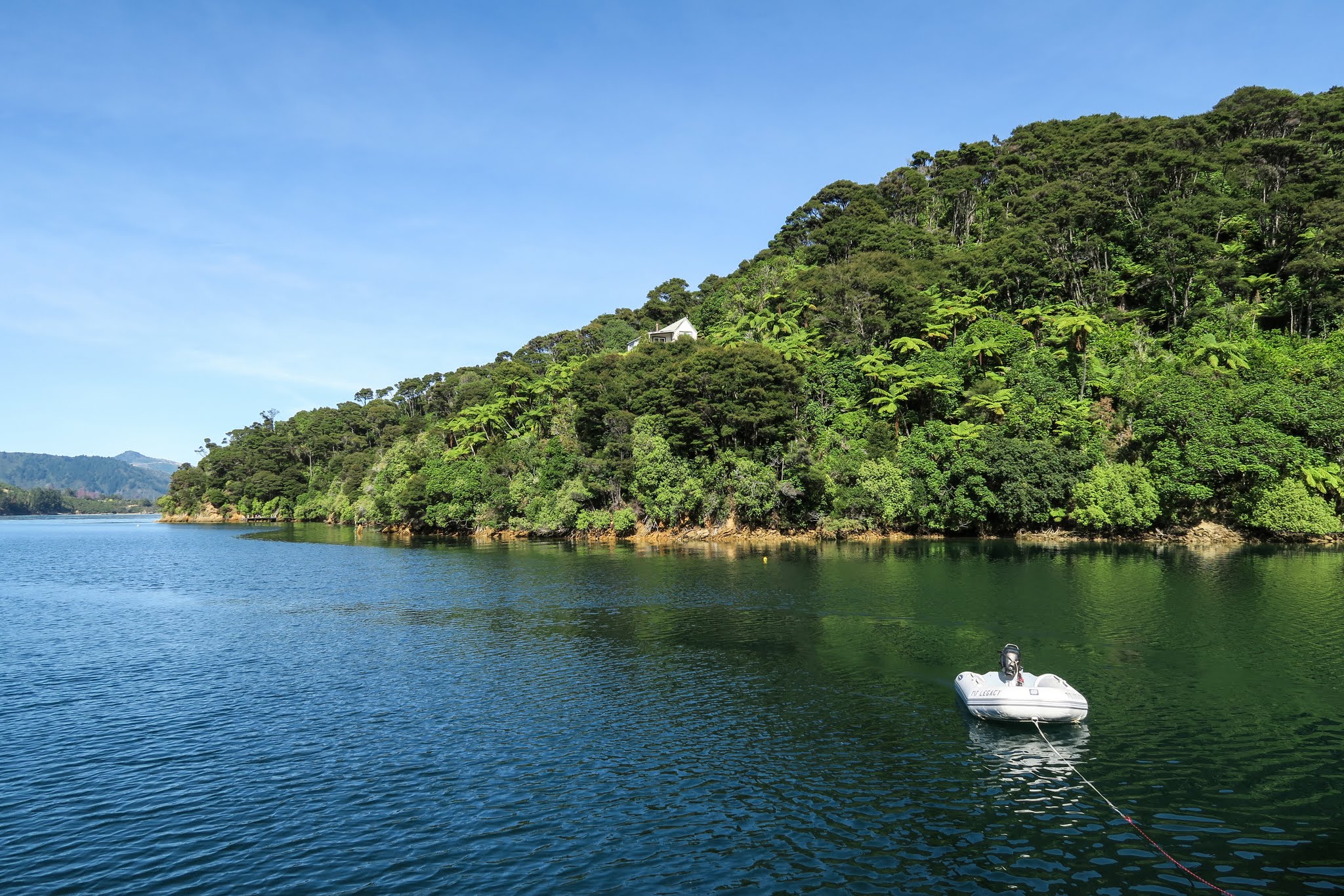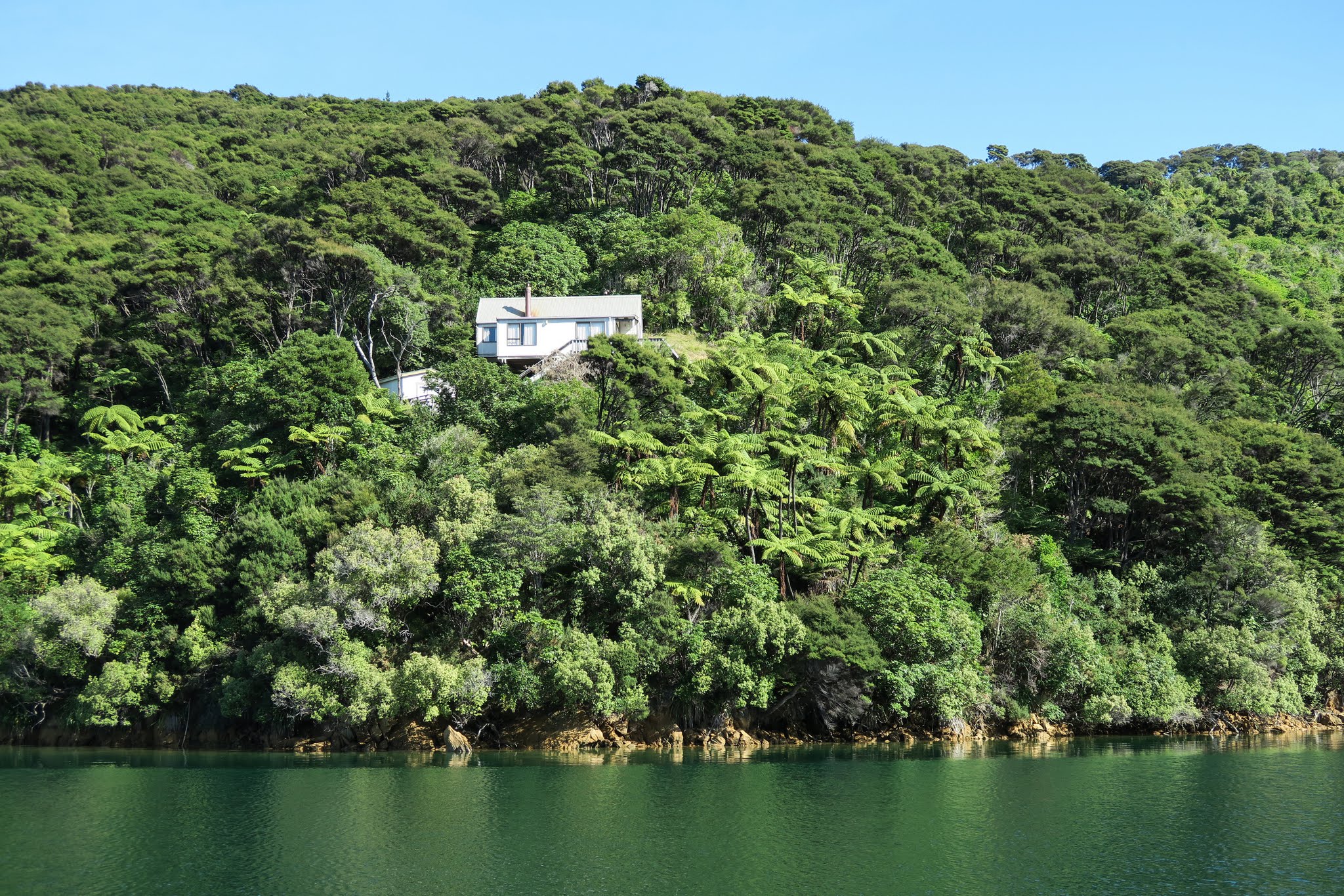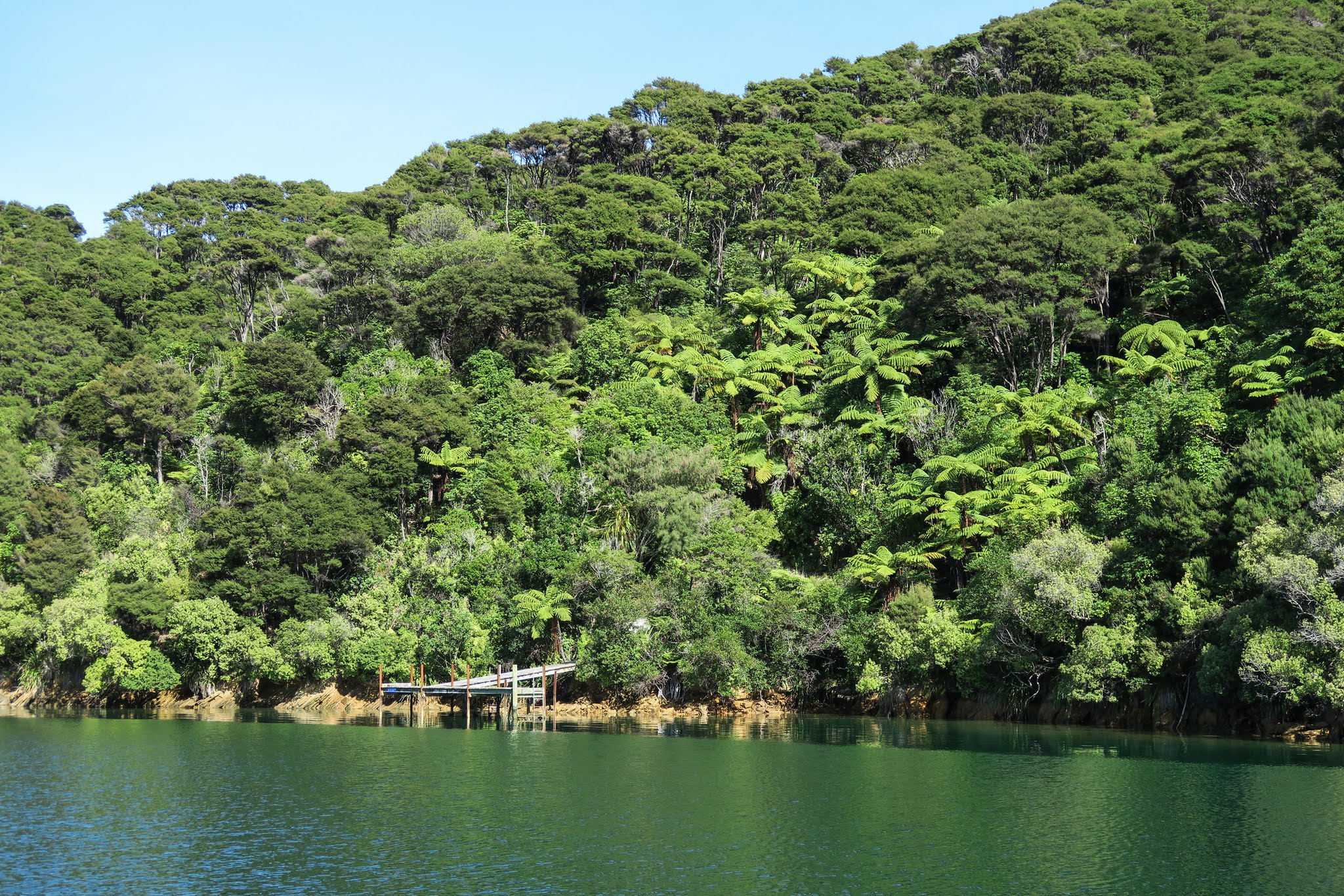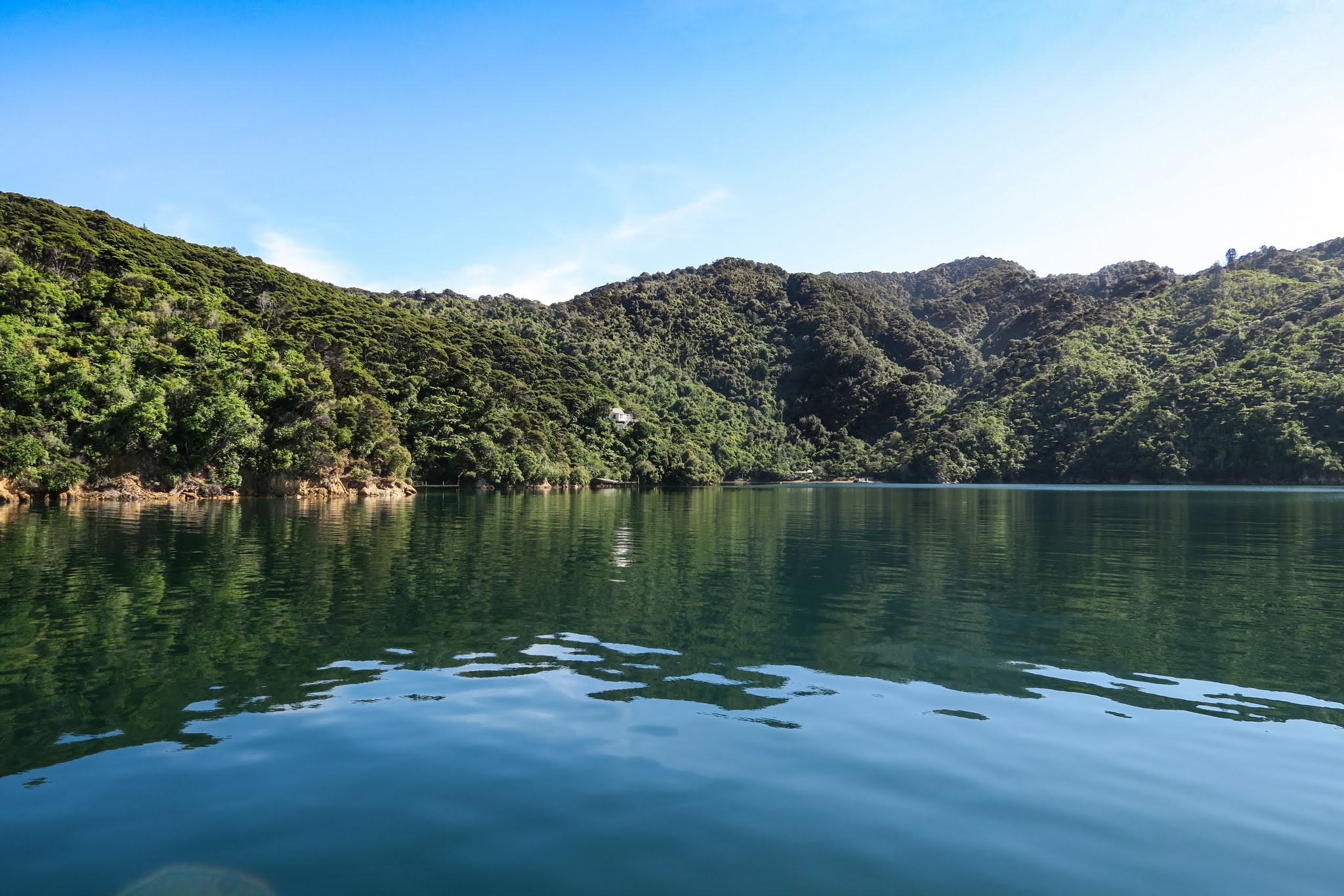March 31, 2016
Today we planned to head from the “Inner Queen Charlotte Sound,” to the “Outer Queen Charlotte Sound.” The Bay of Many Coves is the final bay in the Inner Queen Charlotte Sound.
It may be called The Bay of Many Coves, but it really doesn’t have any more coves than the other bays. There was one more bay here, though, that we were interested in: Cockle Cove. Julian had recommended it, and while we planned to head on, we wanted to at least go look at it and if it grabbed us, we’d stay the night.
With that we motored across The Bay of Many Coves towards Cockle Cove. We noticed the protective arm of land around it had an amazing array of greens, with an especially high number of yellow-green ferns contrasting with the deeper greens of the various trees. Each bay here seems to have a little something special that makes it different from all other bays and in this one, it was the pretty range of greens. Motoring into the cove itself we found still green water, lots of thick vegetation and a stone beach. Right in the middle was a PMW (Combined Club) mooring, empty and waiting. Below, a gallery of Cockle Cove photos (click to enlarge and scroll).
*A note about PMW moorings: There are three boating clubs in the sounds, and these clubs have combined resources to put in a few moorings at some of the more popular anchorages, generally one or two per anchorage. Officially, to use these moorings, you need to be a member of one of the clubs, which costs several hundred dollars. You then signal you’re a club member by flying the pennant flags. We talked to a few locals, and the unofficial consensus is that visiting boats should go ahead and pick up a mooring; no one really cares. If a boat who’s entitled to the mooring comes along, they’ll simply ask that you move, or offer to raft up with you.
We decided early on to avoid these moorings if possible. It’s better to be anchored and not have to worry about being asked to move. But sometimes the mooring is smack in the middle of a cove such that it’s impossible to anchor and be clear of the mooring. That’s when we’d make an exception. So far we’d stayed on two PMW moorings: one in a remote bay in the Tory Channel, and the other in Kumutoto, where realistically we could have anchored, but there were two empty moorings, it was late in the afternoon, and we were being lazy.
We might have taken this Cockle Cove mooring had this been extra special. But lovely as it was, there was a clearing onshore with a small house and a pier (not shown in the photos). That kind of ruined the feeling of being out in a remote place; it felt like camping in someone’s backyard. Also, the sun shone right in here, which I know many people would love, but I prefer this sort of place to have a shady feeling. It was nice to see this cove, but it was easy to remain with our decision to move on.
We had a good look at Ruakaka Bay and Blackwood Bay from the mail boat and didn’t feel the need to stop in either one this time (although Ruakaka Bay has a nature reserve, and if we’re ever back again I’d definitely go anchor there).
Next, we were traveling to the outer Queen Charlotte Sound, starting with a couple of places in the Endeavour Inlet. Today’s wildlife theme: blue penguins! We saw a lot of them, but they’re hard to photograph as they tend to dive when a boat approaches them.–Cyndi
Below a map showing our anchorages the Inner Queen Charlotte Sound and planned anchorages in the Endeavour Inlet. (Just zoom and and out and click on the markers to see what’s what.)

